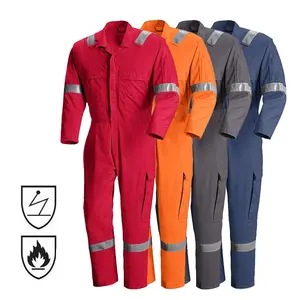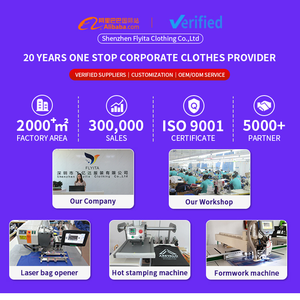
All categories
Featured selections
Trade Assurance
Buyer Central
Help Center
Get the app
Become a supplier

(20819 products available)










































 Ready to Ship
Ready to Ship





An industrial raincoat is a heavy-duty piece of clothing designed to keep the wearer dry in wet conditions. It is typically worn over regular clothing to provide protection against rain, water, and other wet substances. Raincoat manufacturing involves the use of durable materials that can withstand heavy rain and provide protection from the elements. Additionally, industrial raincoats often have features such as reflective strips for visibility in low light and pockets for storing tools or other items.
Industrial raincoats are an essential part of workwear in many industries, where staying dry is crucial for safety and comfort. They are designed to be practical and durable, with features that make them suitable for use in demanding work environments. Raincoat for construction workers is a common necessity, as they can be worn by workers in construction, agriculture, mining, and other industries where working in wet conditions is common. Having an industrial raincoat can be helpful because it enables the worker to stay comfortable and safe while working in the rain.
Industrial raincoats are available in a variety of types and styles. Different types of raincoats serve different purposes and are used in different working environments.
There are many design features in an industrial raincoat. They help the raincoat work well in different environments. They need to be tough and reliable. Here are some of the design features of industrial raincoat.
Most industrial raincoats are made from PVC (polyvinyl chloride) or PU (polyurethane). These are tough, waterproof materials. They can handle the demands of industrial work. They are often coated with additional substances to make them resistant to chemicals, oils, or fire. Some raincoats have high-visibility properties, so workers can be seen in low-light conditions.
The seams of the raincoat are weak points. They are where water can seep in. Industrial raincoats have sealed, double-stitched, or welded seams. They are stronger and more waterproof than regular seams. This is important for keeping the wearer dry.
The fasteners on an industrial raincoat are tough. They are often made from materials like metal or high-grade plastic. They can take a lot of wear and tear. The fasteners can be large and easy to use, even with gloved hands. They can be buttons, snaps, or zippers. Some styles have a storm flap that covers the zipper. It adds an extra layer of protection from wind and water.
Many industrial raincoats have adjustable features. They allow the wearer to get a custom fit. They can also keep out the rain. Features may include adjustable cuffs, hoods, and waistbands. Some raincoats have pit zips. They are underarm vents that allow air flow for cooling. They can help regulate temperature.
Industrial raincoats often have reflective elements. They are usually on the back, front, and sleeves. They help the wearer be seen in low-light conditions. This is important for safety on job sites or when working near traffic.
Some industrial raincoats have extra features. They include pockets for tools or personal items. They have detachable hoods for different weather conditions. Some have a packable design. It allows the raincoat to be folded into a small size for easy storage and transport.
Industrial raincoats are a must for various work environments where constant exposure to rain or wet conditions is experienced. This PPE keeps the workforce dry and safe, enhancing productivity. Some of the sectors where industrial raincoats are used are:
Raincoats are used by construction workers working outdoors. They protect workers from getting wet, which could make them cold and sick. These raincoats are made of strong materials and are long-lasting. They help construction workers stay dry and get their job done.
Workers in oil and gas fields often work in wet or rainy environments. Industrial raincoats keep them dry and warm in cold, rainy weather. Raincoats also help protect the body from contact with harmful chemicals that could be in the rainwater.
Truck drivers and delivery workers are exposed to different weather conditions during their work. Raincoats help them stay dry if it rains. This is important for their comfort and safety while driving. The raincoat is designed to be worn over their uniform. It is also easy to take off when needed.
Workers who repair power lines and maintain power stations work in all kinds of weather. Raincoats protect their clothes from rain and wetness. Raincoats also help keep workers dry, which is important for their comfort and safety.
In factories, where large machines are used and many workers are present, industrial raincoats are used to protect the workers from machine oil, solvents, and other chemicals. If these substances come into contact with a worker's skin, they can cause burns or irritation. Raincoats act as a barrier between the chemicals and the skin, keeping workers safe. Padam plastic raincoat is a popular choice in this segment for its durability and effectiveness.
Choosing the right industrial raincoat is crucial for ensuring safety and comfort at work. Here are some key factors to consider when selecting an industrial raincoat for the workforce:
Before choosing an industrial raincoat, it is important to assess the work environment and the tasks performed. Find out if the work area is exposed to extreme weather, the type of industry, and the specific job requirements. For example, if the work involves heavy machinery, opt for a raincoat with reflective strips for enhanced visibility.
Choose a material that is durable and suitable for the work environment. PVC raincoats are abrasion-resistant and suitable for heavy industries, whereas polyurethane is more flexible and can be used in work that requires a lot of movement. Pay attention to the stitching and the quality of the zippers to ensure that the raincoat can withstand heavy usage.
Choose a raincoat that offers a comfortable fit and allows easy movement. Look for options with adjustable cuffs and hoods that can be customized to fit the user perfectly. Ensure the raincoat has ventilation features to prevent heat buildup and allow breathability. Consider adding a size chart and measuring the workforce for a better fit.
Opt for an industrial raincoat that has high-visibility features, such as reflective strips and bright colors, to ensure the workforce can be seen easily, especially in low-light conditions. Check if the raincoat has appropriate certifications and meets industry safety standards. For example, choose a raincoat that complies with ANSI or other local safety regulations.
Select a raincoat that can be easily maintained and cleaned. Check the manufacturer's recommendations for cleaning and maintenance. Opt for raincoats that can be wiped off easily or washed in a regular washing machine. Regularly inspect and maintain the raincoat by checking the zippers and fastenings for any signs of damage to ensure the raincoat continues to provide protection.
Q1: Can industrial raincoats be reused?
A1: Using an industrial raincoat, one can easily reuse the raincoat. It is a budget-friendly and eco-friendly option. It is also possible to reuse the raincoat. This is achieved by melting the polyethylene materials used in the raincoat. These are used to make other useful plastic products.
Q2: How can industrial raincoats be recycled?
A2: Industrial raincoats can be recycled through the following methods:
Q3: Do industrial raincoats have a size guideline?
A3: Yes, industrial raincoats have a size guideline, just like any other kind of raincoat. However, the size guideline for industrial raincoats may vary with the manufacturer. For this reason, it is important to check the specific size guideline of the manufacturer before selecting a raincoat.
Q4: Are industrial raincoats harmful to the environment?
A4: No, industrial raincoats are not harmful to the environment. This is because industrial raincoats are made of eco-friendly materials. Additionally, the materials used to manufacture industrial raincoats are also biodegradable.
Q5: Are industrial raincoats breathable?
A5: Most industrial raincoats are breathable and have ventilation options. This is to allow air to pass through the raincoat while the raincoat is on. This helps to keep the user comfortable and sweat-free.